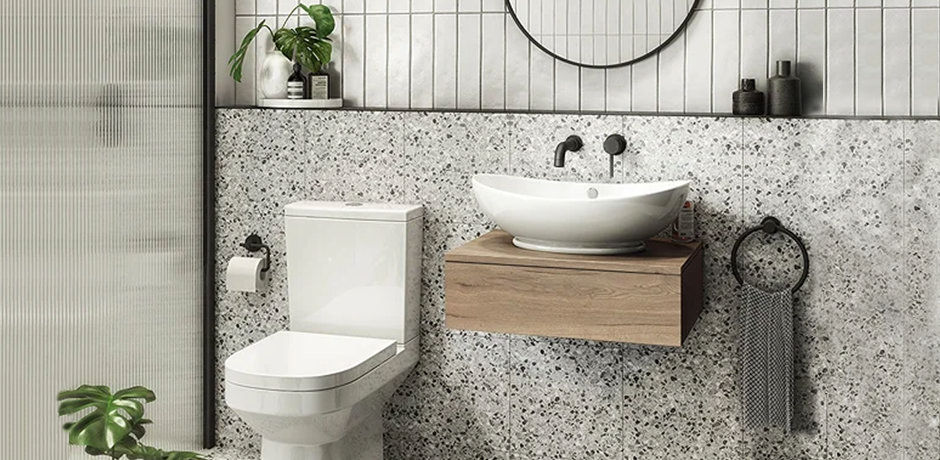
Is a Dual Flush Toilet More Efficient for Water Conservation?
Share
In the ever-evolving world of home technology, the bathroom often emerges as the last frontier for modernization. With the rise of smart devices and sustainable solutions, the question arises: Is a dual flush toilet more efficient? As tech professionals and enthusiasts, understanding the efficiency of such systems could offer insights into both water conservation and cost savings.
The concept behind dual flush toilets is straightforward yet revolutionary. They offer two flushing options: a half flush for liquid waste and a full flush for solid waste. This seemingly simple bifurcation has profound implications for water usage, especially in an era where conservation is key. But is it truly more efficient?

Understanding the Mechanics of Dual Flush Toilets
At its core, a dual flush toilet operates with a dual mechanism that allows users to select between a low or high-volume flush. The low-volume flush typically uses around 0.8 gallons of water, whereas the high-volume flush uses approximately 1.6 gallons. This duality in function provides a significant opportunity for water savings, especially in high-traffic households or commercial settings.
For tech professionals, the allure of such a system lies in its potential integration with smart home technologies. Imagine a system that not only offers dual flush capabilities but also provides data on water usage patterns, helping users to further optimize their conservation efforts.
Efficiency and Environmental Impact
One of the primary advantages of dual flush toilets is their potential for water conservation. According to the Woodlands Water Agency, traditional toilets can use between 3.5 to 7 gallons per flush. In contrast, dual flush systems significantly reduce this amount, potentially saving thousands of gallons of water each year.
From an environmental perspective, reducing water waste is crucial. Freshwater resources are finite, and as populations grow, the strain on these resources intensifies. By opting for a dual flush system, users contribute to a more sustainable future, aligning with global conservation goals.
Cost Implications and Potential Savings
While the initial investment in a dual flush toilet may be higher than that of a standard toilet, the long-term savings are noteworthy. Reduced water bills are a direct benefit, but there are also indirect savings to consider. For instance, less water usage can lead to decreased wear and tear on septic systems, potentially extending their lifespan and reducing maintenance costs.
Moreover, tech enthusiasts might find the prospect of integrating smart water usage tracking appealing. Such features can provide insights into household water use, allowing for more informed decisions regarding water conservation strategies.
Integration with Smart Home Technologies
For those immersed in the world of technology, the ability to integrate a dual flush toilet with smart home systems is a major draw. IoT (Internet of Things) capabilities can transform the humble toilet into a data-rich device, offering insights into usage patterns and efficiency metrics. This integration can be a stepping stone towards creating a fully automated and efficient home environment.
For more on smart home integrations, consider checking out our article on optimizing heating with smart devices.
Are Dual Flush Toilets the Future of Water Conservation?
As technology continues to advance, the potential for even more efficient water-saving solutions grows. While dual flush toilets represent a significant step forward, future innovations may offer additional features such as automated flushing, self-cleaning systems, and more.
For tech professionals, the challenge lies not only in adopting these systems but also in innovating further. The potential to create a truly water-efficient home is vast, and dual flush toilets are just one piece of this puzzle.
For further reading on water-efficient toilets, visit our comprehensive guide on water-efficient toilet comparison charts.
Conclusion
In conclusion, the question of 'Is a dual flush toilet more efficient?' can be answered with a resounding yes. These systems offer substantial water savings, cost benefits, and the potential for integration with smart technologies. For tech enthusiasts, the dual flush toilet represents a convergence of innovation, sustainability, and practicality, making it a compelling choice for modern homes.

FAQs
1. How much water can a dual flush toilet save?
A dual flush toilet can save thousands of gallons of water annually, depending on usage patterns and the size of the household.
2. Are dual flush toilets compatible with smart home systems?
Yes, many dual flush toilets can be integrated with smart home systems, providing valuable insights into water usage and offering additional convenience.
3. Are there any downsides to dual flush toilets?
While they offer many benefits, some users may find the initial cost higher than standard toilets. However, the long-term savings on water bills often offset this initial investment.
This article contains affiliate links. We may earn a commission at no extra cost to you.
